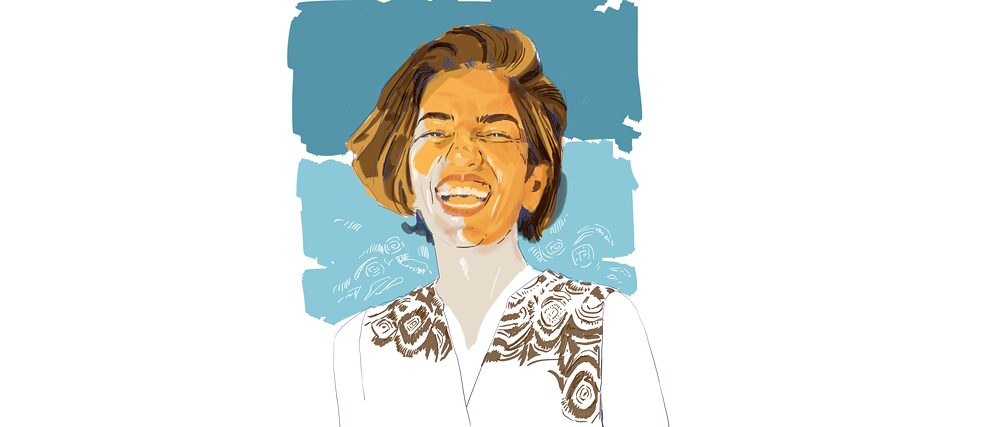by Lanah Haddad from Erbil
The Assyrian Empire

Lana Haddad was born in Erbil. While her mother is originally from Kirkuk and her father from Khanaqin, her family lived in Baghdad before. Due to the political situation under Saddam’s regime, Lanah‘s family moved to Erbil and later on to Germany, when she was six years old. She completed her education there and completed her master’s degree in 2015 in archaeology and ancient languages, including Akkadian and Sumerian. In 2016, she began studying for her Ph.D. in Frankfurt.
Lanah has a great passion for both archaeology and the diverse cultures of Mesopotamia. She has many new ideas that are the product of her experiences working with German and other international teams in Egypt, Jordan, Syria and especially Iraq. Now, she lives in Erbil and is preparing for a project that Spotlight Iraq has funded.
The Board Game
The Assyrian Empire is the name of Lanah’s project, which takes the form of a board game. Lanah aims to deliver the knowledge that archaeologists have gathered from the region back to the local people. Lanah explains how, with the emergence of archaeology as a discipline, foreigners–including travellers, missionaries, diplomats, collectors and archaeologists–have taken with them a large amount of the cultural heritage from this region with or without official permission. Now, however, the law does not permit any removal of archaeological objects outside the country. Still, Lanah believes that many archaeological projects nowadays take something else, namely, the knowledge that they fail to give back to the local population. Detailed accounts remain in exclusive circles and only short reports are given to the public. Lanah’s project thus aims to reconnect the local people with their heritage and civilisation.The board game is in Arabic and Kurdish (Sorani/Bahdeni) and is based on archaeological and historical findings. The game consists of a board, playing cards and building cards. It is played between two players, each representing one of two kings: Ashurbanipal and Senmacherib. The goal of the game is to become the king with the largest empire. Five main cities of the Assyrian empire are introduced on the board: Assur, Nimrud, Dur Sharrukin, Nineveh and Arbail. Building cards consist of six development stages of a settlement: housing, workshops, fortification wall, khan, temple and palace.
The booklet accompanying the board game provides detailed information on the mentioned characters– like the two kings– or the different professions during the Neo-Assyrian époque (priest, scribe, soldier, builder or trader), as well as information on the general development stages of the settlements. The booklet provides the reader with context and historical background on the five cities.
Lanah believes that Assyrian heritage should not only be associated with modern Chaldean or Assyrian groups. It is wrong to exclude all the others who inhabited this region, who are part of a mosaic of diverse peoples and cultures. Mesopotamia was never composed of a single ethnicity or a single culture. Nationalist thinking that is the basis of one nation, one language and one culture is a structure related to modern, Western nation-states. Mesopotamian heritage and civilisation show that there was much diversity in the region’s inhabitants.
Lanah’s project is an important step in promoting tolerance and multiculturalism and in rendering knowledge about the ancient civilisation available to the region’s populations.